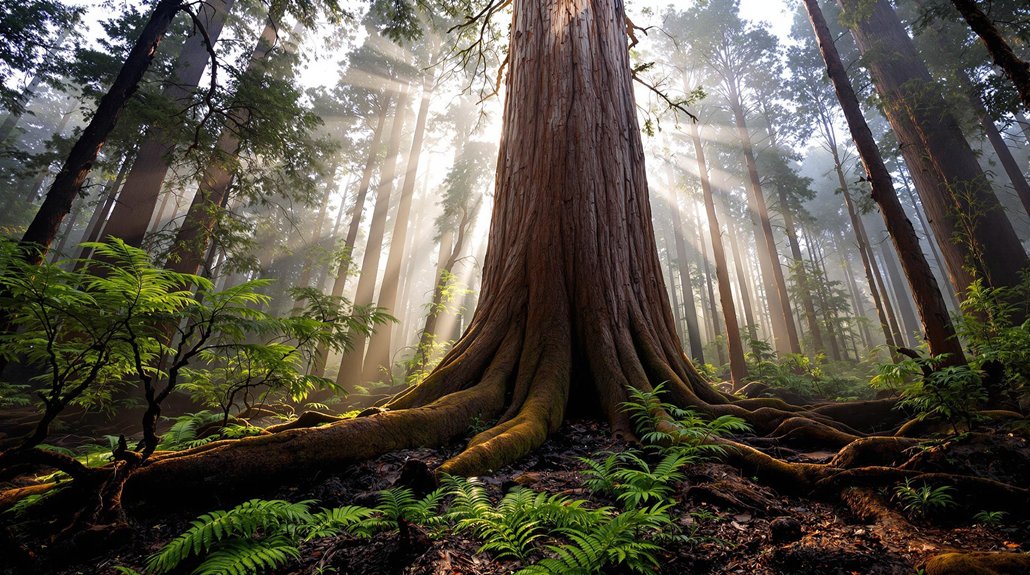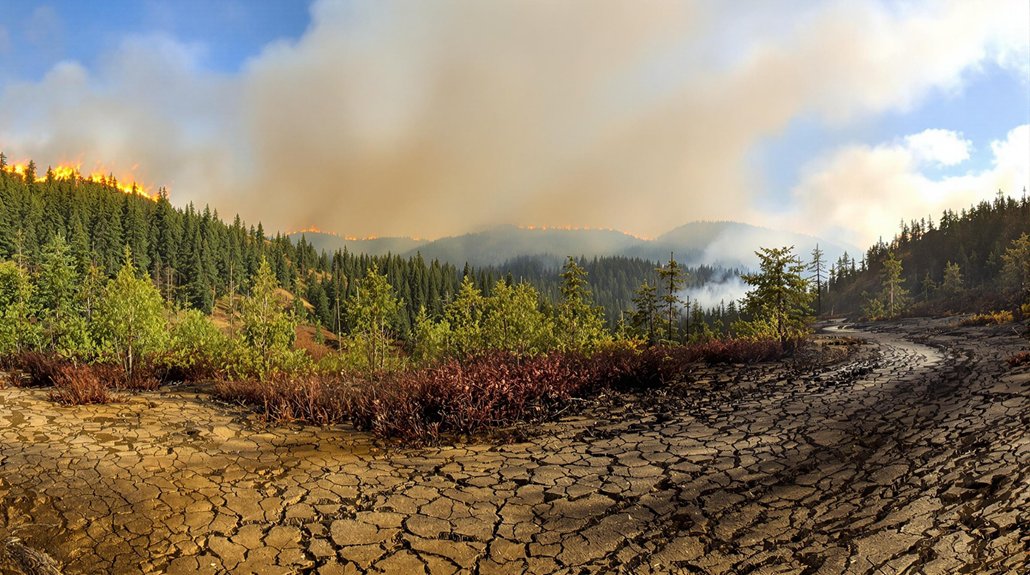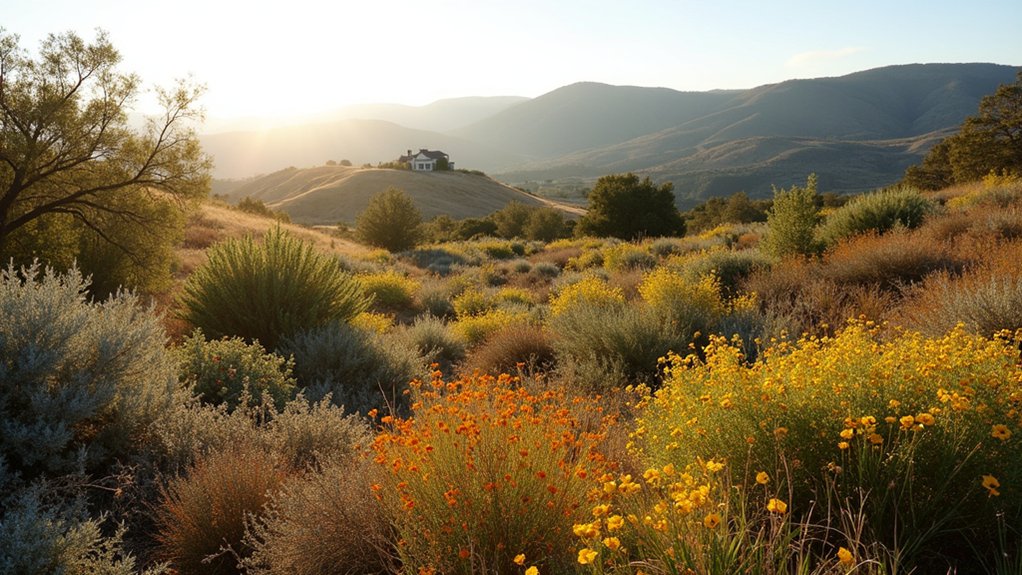Tasmania’s ancient trees face growing threats from bushfires linked to climate change. Some species, like the Huon Pine, can live 2,500 years, while King’s Holly may be over 43,000 years old. Recent wildfires devastated over 205,000 hectares of bushland, endangering these living relics from the Gondwana supercontinent. Conservation efforts include the Giant Tree Register and World Heritage protections. These ancient giants aren’t just tourist attractions—they’re crucial carbon sinks and windows into Earth’s distant past.
Giants of the plant world tower over Tasmania’s lush landscape, creating a living museum of botanical wonders. The island state is home to Eucalyptus regnans, also known as swamp gum, which ranks as the tallest flowering plant on Earth. In the Styx Valley, about 100km northwest of Hobart, stands the Centurion tree, reaching an impressive 99.6 meters and claiming the title of second tallest tree in the world.
These ancient forests contain more than just tall trees. The Grove of Giants features over 150 trees with diameters exceeding 4 meters. Four eucalyptus species reach gigantic proportions in this relatively small area. One notable specimen was El Grande, which was Australia’s largest tree by volume before its tragic death in 2003. Some of Tasmania’s trees are among the oldest living organisms on the planet. Huon Pine can live up to 2,500 years, while King’s Holly is believed to be more than 43,000 years old, making it potentially one of the oldest living plants on Earth.
Tasmania’s ancient giants aren’t just tall—they’re among Earth’s oldest living beings, with King’s Holly potentially dating back 43,000 years.
Many of these species trace their origins to when Australia was part of the Gondwana supercontinent. The Deciduous Beech is Australia’s only cold-climate deciduous tree, and the Wollemi Pine was thought extinct for 60 million years until its rediscovery in 1994.
These ancient trees now face serious threats. Bushfires have become more frequent due to climate change. Logging continues in some old-growth forests despite protests. Disease, particularly root rot, threatens the rare King’s Holly population. Recent wildfires have devastated over 205,000 hectares of bushland, putting irreplaceable ancient species at risk. A drying climate impacts rainforest and alpine species, while invasive plants compete with native flora. These ancient forest ecosystems play a crucial role as carbon sinks, absorbing CO2 that would otherwise contribute to global warming.
Conservation efforts aim to protect these living treasures. The Giant Tree Register documents and protects large specimens. Some areas, including Grove of Giants, have been removed from logging plans. World Heritage listing shields certain forest areas from development.
These trees aren’t just beautiful—they’re ecologically significant. They provide habitat for endangered species like the Swift Parrot and store significant amounts of carbon. Indigenous Tasmanians have valued these forests for over 41,000 years.
Now, these ancient giants also support tourism, drawing visitors to remote areas for tree walks, canopy tours, and a glimpse into Earth’s distant past.









